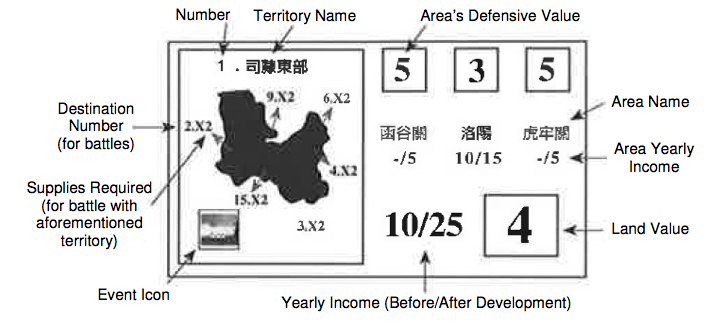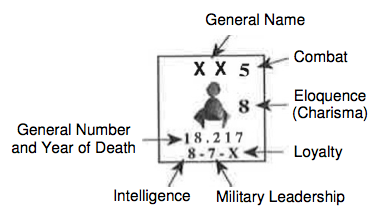Chronicle of the Three Kingdoms is a war game based on the Three Kingdoms era. The game can support 3 to 7 players. Each picks from the roles of Cao Cao, Yuan Shao, Sun Ce, Liu Bei, Liu Biao, Liu Zhang and Ma Teng. During the game, players pit their wits against one another, managing military, economy, political and diplomatic matters. The player who manages these the best will win the game.
The above is a short
summary of the game. Do not be concerned if you have not tried war
games before. Read through the rules carefully and try the game with
a few friends. You will find that the rules are not overly
complicated. For experienced war gamers, the simple types of counters
in this game do not affect the flow or depth of the game. Instead,
they serve to help you understand the Three Kingdoms era.
If you have any questions
regarding the game, do write (include return envelope and postage) to
us or call us. Our association has dedicated personnel to reply to
your queries. Contact us at
https://www.wargames.com.hk
(Hong Kong).
1.1 Remarks on Terminology
For ease of explanation,
all those having leadership roles are referred to as leaders
and their daughters are
referred to as princesses. This does not reflect the actual
terminology of the Three Kingdoms era.
2.0 Game Components
2.1 Map
To occupy a territory, all areas in that territory have to be occupied.
The orange horizontal line running across the middle of the map
indicates the border between the northern and southern parts of
China. This border only comes into play during battles
(see 10.2 Terrain
and the
Battle Outcome Table).
The various sections outside of the map,
known as the leader information tables, contain information regarding
the starting positions of each king, diplomatic relations numbers
etc.
2.2 Cards
1. Territory Cards
Event Icon – Different territories
contains different event icons. The icons and what they stand for are
as follows:
Each set of Chronicles of the Three Kingdoms contains:
1 map
70 cards
3 sheets of counters
1 set of rules
1 six-sided die
The map shows all the
territories of the Eastern Han dynasty. The solid black lines denote
the boundaries of a state or province. These will be referred to as
territories in this set of rules. There are 20 territories. Each
territory contains up to 3 areas, denoted by the dashed lines.
There are two types of
cards in the game: territory cards and player cards. There are 20
territory cards, each containing information pertaining to the 20
territories. There are also 50 player cards. These are drawn during
gameplay by players. Players are reminded not to confuse one for the
other.

Area’s Defensive Value – The size and
defensive strength of the area. When the defender chooses to defend
the city/fortress during battle, this value gives the defender an
advantage.
Area’s Yearly Income – This indicates
the importance of the city and affects the income and land value.
(See also 5.0)
Land Value – The higher the Land
Value, the more difficult it is to develop the territory. The
territory is fully developed when the Land Value becomes 0
Yearly Income – The number on the left
indicates the annual income if the territory has not been developed
yet. The number on the right indicates the annual income after the
territory has been developed.
Supplies Required – Reflects the
difficulty in delivering supplies due to terrain. The number
indicates the amount of gold required.






